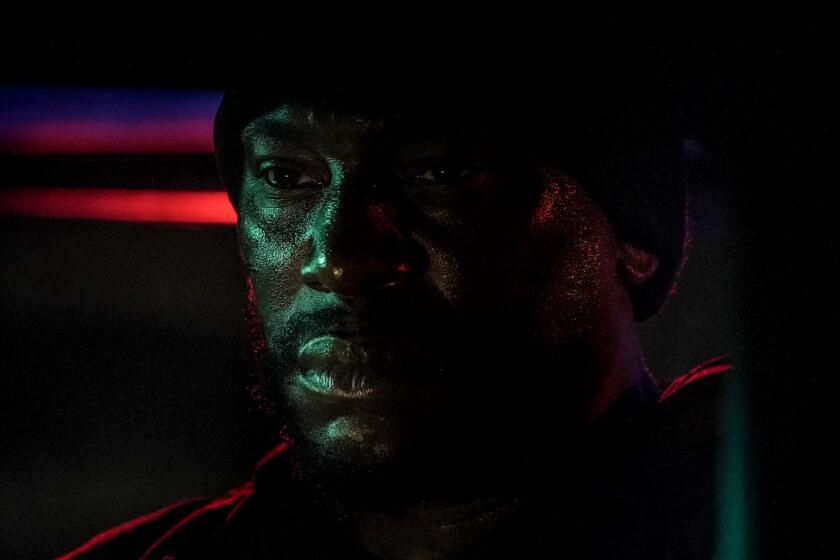Director Brian De Palma’s underrated gems, decade by decade
Few American filmmakers have been as critically polarizing, or provoked as much critical re-evaluation over the years, as Brian De Palma. The director found a powerful champion early on in Pauline Kael, who helped make his career with her raves for “Carrie” (1976), “Dressed to Kill” (1980) and “Blow Out” (1981). The counter-arguments have been equally passionate: De Palma’s obsessive affinity for Hitchcock, his fluid and exultant visual style, and his fascination with the erotics of screen violence, much of it perpetrated against women, earned him as much scorn as praise.
If De Palma’s career has taught us anything, it’s that even the harshest judgments can be as impermanent as the moving image itself. Even commercial success has been a double-edged sword: Some of his more popular efforts, like “Scarface” (1983) and “The Untouchables” (1987), are arguably less interesting today than the less heralded likes of “Body Double” (1984), “Casualties of War” (1989) and “Carlito’s Way” (1993). In their survey of De Palma’s career, The Times’ Justin Chang and Mark Olsen have highlighted several of his more contentious and/or neglected pictures — lesser-loved works that nonetheless bear the unmistakable imprint of a master.
1970s
Chang: “Sisters” (1973). The greatness of “Carrie” remains undisputed, and “The Fury” is delirious fun; watching it recently was like stumbling on some awesome, forgotten “X-Men” prequel. De Palma really laid the groundwork for those films’ technical virtuosity with his eerie, still-unnerving exercise in cinematic “Psycho”-sis. You could argue that he was still testing the waters, but “Sisters,” for all its low-budget creakiness, feels fully formed — from its sly opening bit of misdirection to its adroit use of split-screen to its memorably churning Bernard Herrmann score. De Palma’s choice of subject matter couldn’t have been more appropriate: With this film he effectively conjoined himself to Hitchcock, announcing himself as a skillful mimic with a mischievous side all his own.
1980s
Olsen: “Body Double” (1984). Even more than “Dressed to Kill” or “Blow Out,” for me “Body Double” is the most quintessentially Brian De Palma movie of what might be thought of as his “high period” — that late-’70s, early-’80s moment when he was making relatively high-budget, high-profile movies that culminated in “The Untouchables.” The mix of sleaze and emotion in “Body Double” has always struck me as particularly deft, as if even perverts can have a heart. And it is also here where De Palma’s excavation of Hitchcock for both story tropes and visual cues synthesizes into something genuinely all his own.
Chang: “Casualties of War” (1989). Some of the signature themes De Palma played with in “Body Double” — a man’s inability to save a woman’s life, the tragedy of seeing but not really seeing — achieve their fullest, darkest expression in this devastating Vietnam War drama, which feels like nothing he’s done before or since. If De Palma here favors a searing emotional directness over his usual stylistic trickery, “Casualties of War” nevertheless takes his love for “Rear Window” and “Vertigo” to its most sobering possible conclusion: There is no voyeuristic thrill in the spectacle of sexual violence he confronts us with this time, only a crippling sense of helplessness. De Palma achieves something here that few directors could: Even as he paralyzes us in our seats, he somehow deepens our capacity to feel.
1990s
Olsen: “The Bonfire of the Vanities” (1990). In Noah Baumbach and Jake Paltrow’s documentary, De Palma shows his own penchant for insightful self-criticism when he laments that the biting social satire of Tom Wolfe’s original novel was watered down to make the movie’s characters more likable. Even so, watching “Bonfire” today it feels unexpectedly both buoyant and savage, a trenchant no-one-unscathed look at class, race, money and privilege that you can’t even imagine being made at this budget level today. While the all-access making-of book “The Devil’s Candy” clearly chronicles all that went wrong with the film, “Bonfire” is also a film that has become obscured by its notorious reputation. It proves an unspoken thesis of the documentary, that there are no minor De Palma films.
Chang: “Mission: Impossible” (1996). De Palma’s biggest commercial hit may be a slick and glossy franchise one-off, but it remains the nimblest and most endlessly rewatchable picture in that durable Tom Cruise franchise: It’s a movie I keep coming back to — each time grasping a bit more of the head-spinning plot, each time realizing how little it matters. De Palma’s mastery of visual storytelling makes pure catnip out of the big, dialogue-free set pieces, but the sneaky pleasure of “Mission: Impossible” is how its story — of a man betrayed by the shadowy system he works for, then forced to go rogue — becomes a blink-and-you-miss-it metaphor for this director’s Hollywood career.
2000 to the present
Chang: “Mission to Mars” (2000). What can I say, I like De Palma in “Mission” mode. His voyage to the red planet remains one of the most maligned efforts of his career, though it also has its share of eloquent defenders, chief among them the critics Armond White and Charles Taylor. Me, I still remember seeing it in theaters 16 years ago and loving it unreservedly for its breathtaking visual majesty as well as its otherworldly optimism. A rare expression of pure wonderment in the director’s oeuvre, “Mission to Mars” nevertheless contains one harrowing, heartrending sequence of personal sacrifice that deserves a permanent place in De Palma’s all-time highlight reel.
Olsen: “Passion” (2012). “Femme Fatale” has already been more or less revived in the eyes of many critics, its overwhelming opulence and bravura large-scale set pieces giving it a more obvious appeal. But De Palma’s most recent feature, 2012’s “Passion,” shows what he is capable of even on a limited budget and scale, turning in a corporate espionage erotic thriller that pushes its own limits. Just the way he shoots a Berlin boardroom with dynamic relish transforms even the simplest of scenes. And the joy with which actresses Rachel McAdams and Noomi Rapace tear into their roles, verging on camp but never quite, spotlights how much De Palma likes actors, and uses his camera to create a space for them. So yes, Brian De Palma likes to watch.
More to Read
Only good movies
Get the Indie Focus newsletter, Mark Olsen's weekly guide to the world of cinema.
You may occasionally receive promotional content from the Los Angeles Times.












